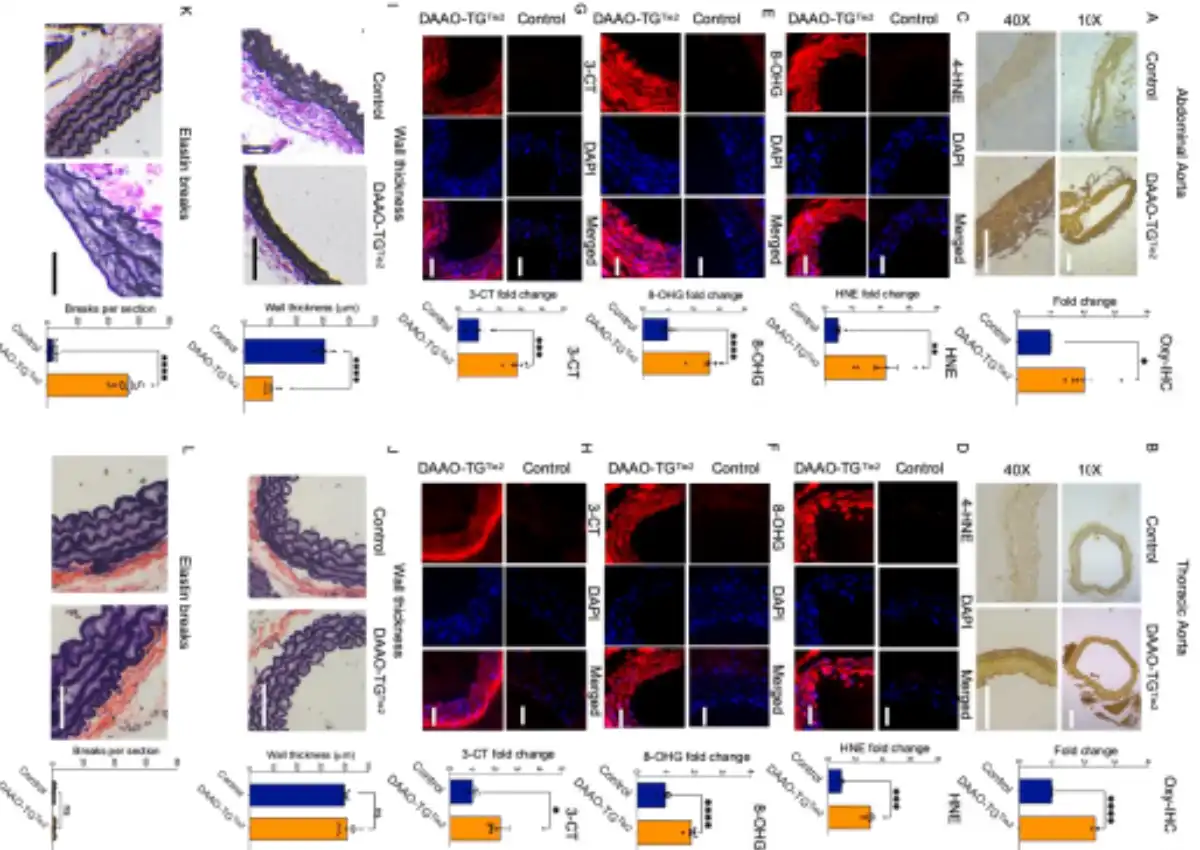New way to treat high blood pressure and aortic aneurysms.

Oxidative stress can occur when our cells are exposed over time to harmful molecules called “reactive oxygen species.” These reactive oxygen species can damage cells and are present in critical disease states, such as high blood pressure and aortic aneurysms. Aortic aneurysms are balloon-like expansions in the body’s largest artery and are usually fatal when they rupture.
Researchers at Mass General Brigham have discovered a new pathway that could lead to a treatment for high blood pressure and aortic aneurysms. By creating a new laboratory model to study these conditions, the team treated hypertension and aortic aneurysms by targeting a protein they discovered to be involved in the vascular cell response to oxidative stress. The findings were published in The Journal of Clinical Investigation.
“Every year, approximately 15,000 Americans die from aortic aneurysms, but the causes of these aneurysms are still not fully understood. And hypertension — high blood pressure — affects half of all adults in this country, creating a significant unmet need for new antihypertensive drugs,” said senior author Thomas Michel, MD, PhD, senior physician in Cardiovascular Medicine at Brigham and Women’s Hospital and founding member of the Mass General Brigham healthcare system.
Michel is also a professor at Harvard Medical School. “Our studies have identified a potentially important and entirely new pharmacological target for the prevention and treatment of hypertension and aortic aneurysms.”
Although oxidative stress has long been associated with hypertension and aortic aneurysms, it was still unclear whether it actually caused these complex medical conditions. To investigate, Michel and his colleagues created a transgenic mouse model in which oxidative stress can be dynamically modulated within blood vessels, using a new scientific strategy called “chemogenetics.”

The studies, led by Apabrita Ayan Das, PhD, a postdoctoral researcher in Michel’s lab, discovered that oxidative stress affects proteins in the walls of blood vessels, causing vascular cells to change and become more prone to developing aneurysms and hypertension. The research team identified a key protein in this process called DUSP-3. When the scientists administered a DUSP-3 inhibitor to mice with oxidative stress, the treatment blocked the development of aortic aneurysms and reduced hypertension.
“DUSP-3 had never been previously associated with hypertension or aneurysm formation. It may be an important pharmacological target for treating or preventing these conditions,” said Michel. “We are also expanding our studies on DUSP-3 inhibition to investigate other vascular disease states associated with oxidative stress, including Alzheimer’s, atherosclerosis, and aging.”






